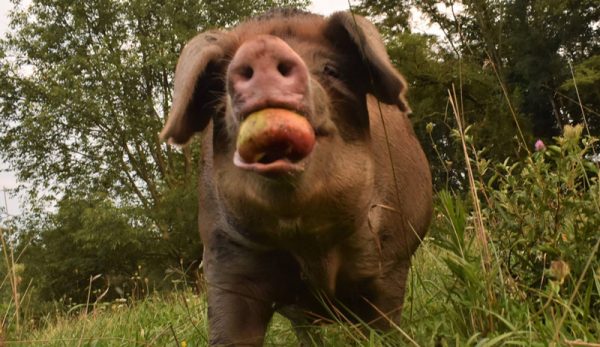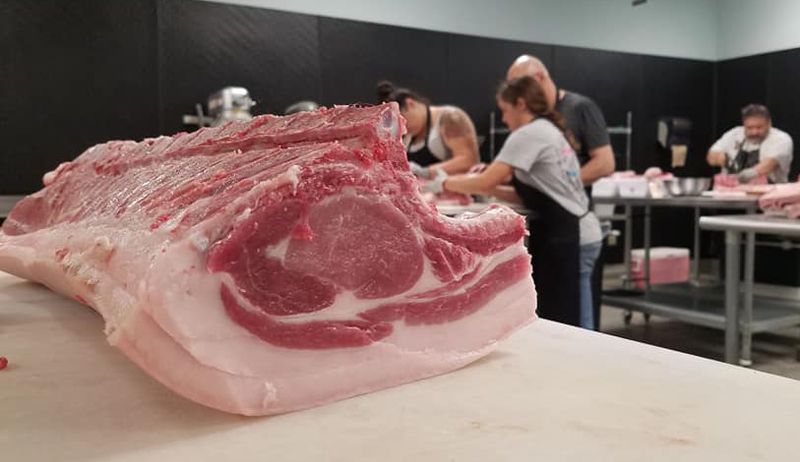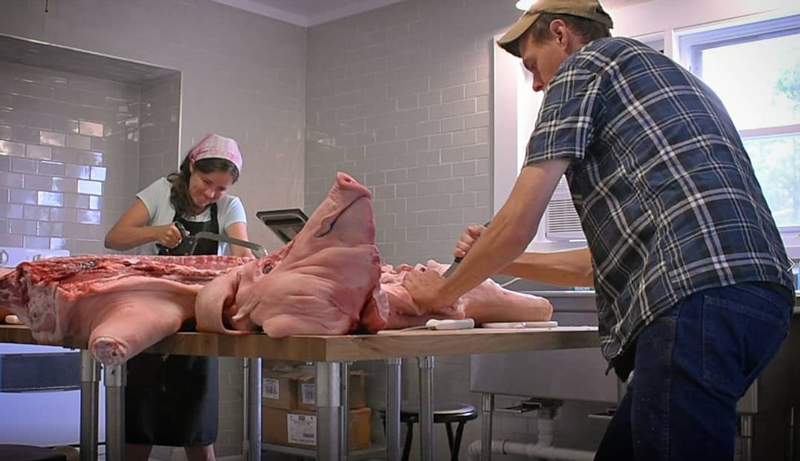
As COVID-inspired orders roll in and fill meat processing appointment books all over the country, why not take the extended wait times to do a little soul searching, examining a most-uttered question at the processor’s door.
Is the butcher stealing my meat?
Spoiler alert: Probably not. Look, I get it. If Jesus Christ himself was my butcher, and I took in a 300-pound hog and got 400 pounds of meat back? I’d still be suspicious.
It’s human nature after lovingly rearing a rare and precious beast for eight to 10 months (maybe longer if you’ve got Kunes), to surrender all control to whatever happens behind closed doors. And if you’ve heard a story about a butcher from a farmer, it probably wasn’t good.
But the more we familiarize ourselves with our animals and the bigger picture of small-meat processing, the more we have discovered our fears to be in vain.
Here are some tips for choosing the right pigs for your farm.
Is That Even My Hog?
Unless you are getting your hog back in less than a week, chances are, yes, that’s your pig. At least most of it.
The key to sleuthing the truth, meat detectives, is simply asking the right questions.
Are you getting your meat back in rapid pace, especially cured hams and bellies? Well, you may be frequenting what is referred to in the industry as a “sub” facility.
That is, they take the pounds of meat your animals provide and swap them for the same number of prefabricated pounds in the freezer. This is rare, and obviously a nightmare to those raising heritage breeds. So it’s important to ask ahead of booking.
For our purposes, the vast majority of small state and federal inspected processors practice as “pool” facilities.
That means whole muscle cuts (pork chops, roasts, bacon) from your individual animal come back to you. But ground meats, bones and fats (for rendering) are often pooled with others cut the same day, then ground and divided and packaged proportionally.
Before you’re bummed out, realize it is space- and labor-prohibitive for most facilities to trace ground fat and lean 100 percent from individual animals through the entire process. If you can find a facility that does this, expect to pay for that service. A lot.

Know Your Animal
We love our full-bodied pigs and believe they make a no-brainer superior product to conventional pork. But we also realize that the same thing that makes them delicious will also murder the “typical” yield percentage.
That’s right: Fat. Delicious, flavorful, moisturizing, healthy fat.
Take-home packaged yields are hurt worse if you fail to communicate to a butcher that your freezer is a safe space for fatty cuts. Over the years, the majority of customers at small processing plants want the fat trimmed off, (horror!) and butchers want happy customers.
Have the conversation beforehand if you’d like them to lighten up their trimming hand. Communication is key. What we’re doing isn’t “normal.” Not yet, anyway.
Can you read a butcher’s cut card? Here’s a quick primer.
Bacon Bits
The item counted with the most side-eye from the farmer (for good reason) is bacon. Made from the hog’s sides, bacon bellies can be trimmed to fit specific equipment. Thus, a larger hog will experience some loss.
They also may trim several pounds of belly fat from on an overly fat pig. Again, just ask them about their process.
There are thousands of hog yield estimates out there, but they will only evoke suspicion. Available information is weighted for a leaner, more conventional carcass. Expectations for newbies coming in hot with these estimates are high. Lower them.
Breed, line and condition all play a role in the amount of bacon that makes it home.
Percentages depend on whether the processor removes the skin or scalds the hog on the kill floor, and what they include in the hanging or “dressed” weight. Some facilities may leave the hog’s head, organs, trotters and your carefully curated 3 inches of back fat on the kill room floor.
It’s your job to find out what body parts are included in each step of the process when determining yield as a percentage of live weight and hanging weight. It’s a lot of navigating. And a lot of math.
Be patient and consistent. You load hogs on a trailer—you can do anything.
Good resources for heritage breed-specific carcasses exist out there. But nothing on this Earth will guide you on the path of righteous accusation better than specific numbers from your own animals.
Keep records from every cross of creature you send in. If you can, break down a carcass or two at home. I promise that when you’re elbow-deep in a few hundred pounds of pork carcass, local processing services will seem extremely underpriced.
When mistakes are made and weights seem low, ask if a forgotten box is hiding in the back of the freezer. That’s the culprit way more often than a butcher stealing customers’ meat.

Partners in Struggle
The relationship between butchers and those who raise hogs, though integral, is often hostile and full of mistrust right out of the gate. It’s very common for a butcher to be accused of stealing meat.
But butchers face a lot of the same hurdles that farmers and homesteaders do:
- Lack of reliable skilled labor
- Handling hard physical work in rough elements
- Trying to make a living as a craftsman in a world where efficiency and automation are king
Processors carry the additional burden of heavy regulatory pressure. They sometimes deal with traumatic stress or mental health disorders from the taxing job, too.
Nowadays, with the global pandemic in full swing, butchers are adding shifts and kill dates, working at 100 percent capacity or above, and trying to keep employees safe during a global pandemic. It’s even more than usual to juggle, so it can’t hurt to check in and see how you can make their job easier.
We’re on the same team.
Are there bad eggs? Absolutely. Are there thieves out there? Of course. But we need the good ones around, or we’re on our own. Don’t add to their trouble by wrongly accusing the butcher of stealing your meat.




